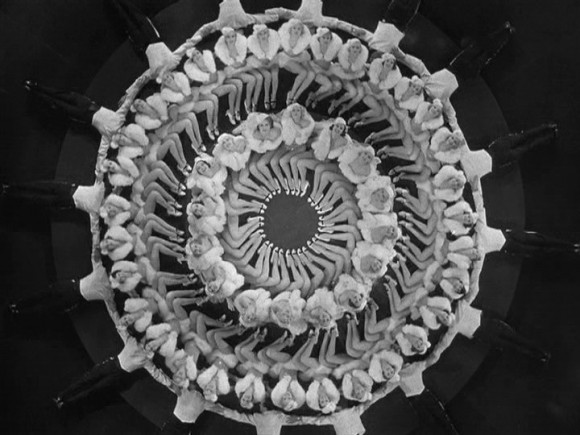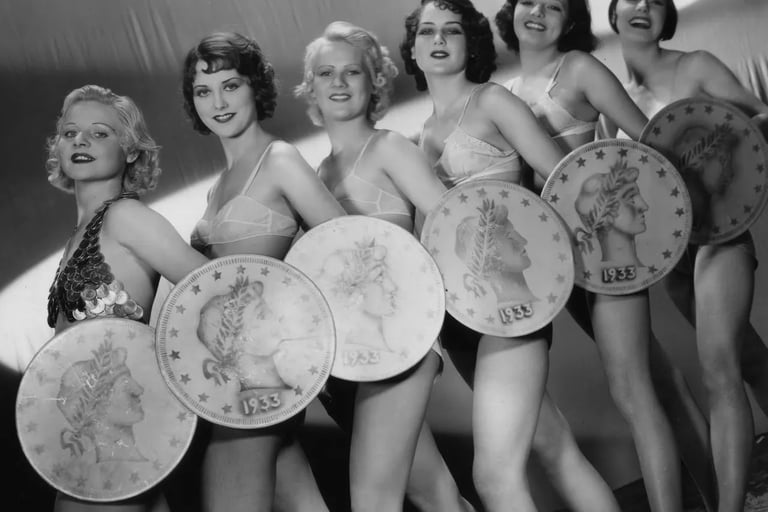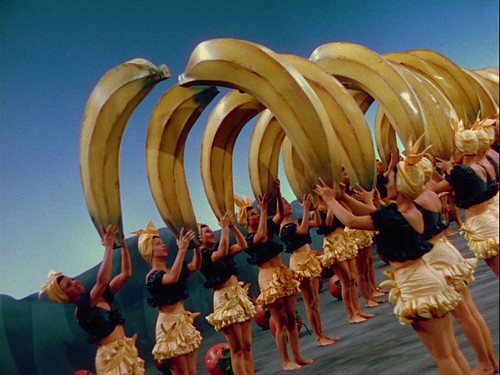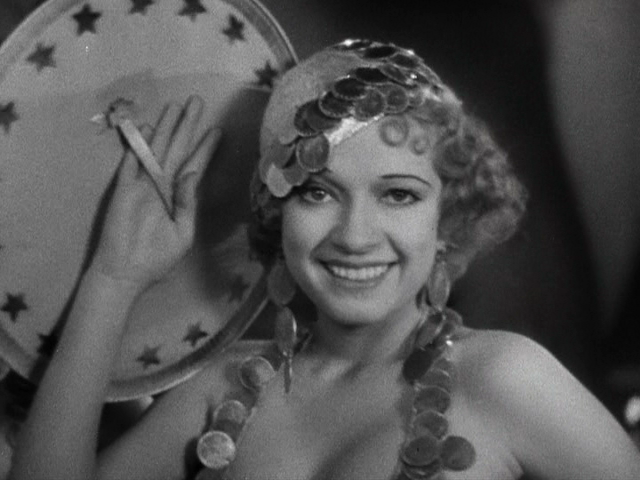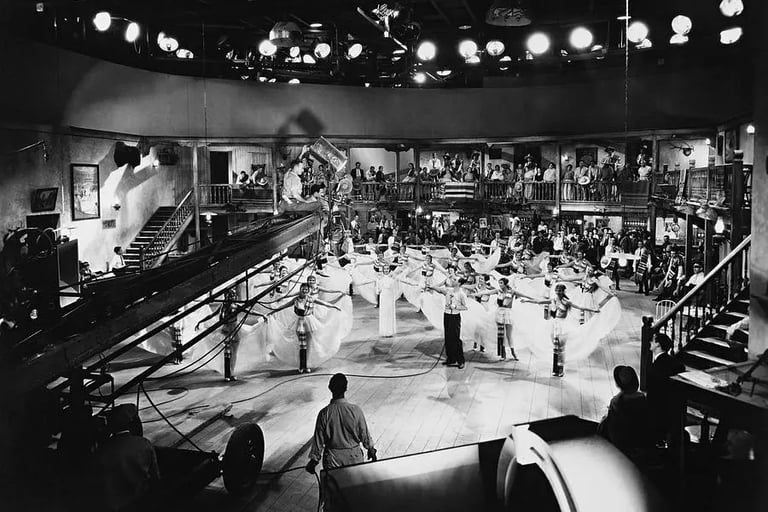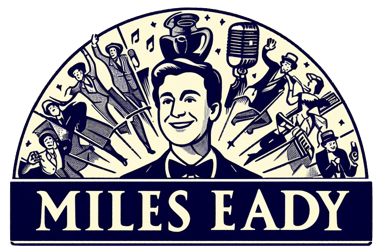Berkeley’s Signature Style: The Kaleidoscope that Changed Movie Musicals (1930–1935)
Berkeley's look
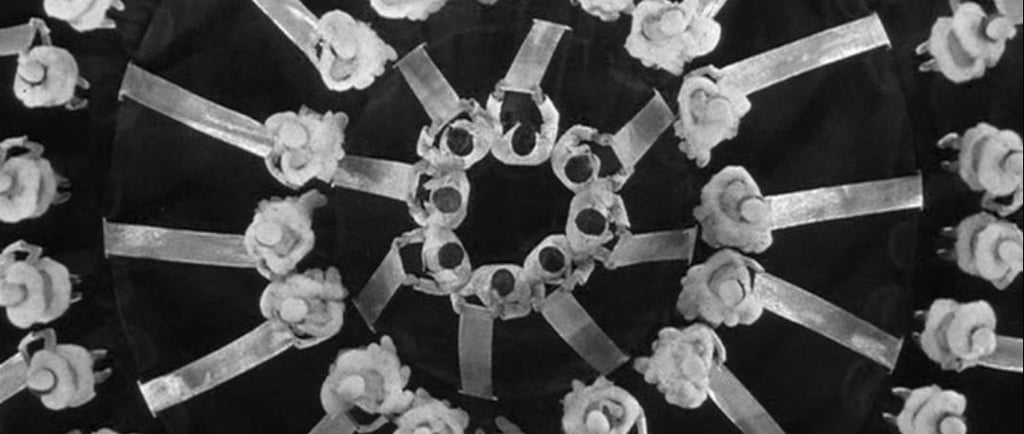

Busby Berkeley wasn’t just a choreographer; he was a cinematic architect of spectacle. From dizzying overhead shots to hypnotic geometric patterns, his style reshaped how musicals dazzled on screen. In this post, we look at the “Berkeleyesque” — a visionary visual language that turned chorus lines into living kaleidoscopes and made the camera dance like never before.
Stylised Use and Objectification of the Female Body
His choreography often presented women less as individuals and more as living architecture — human harps, spinning wheels, or decorative elements of a grand design. While dazzling, this approach also played into voyeuristic and fetishistic aesthetics, creating playful “no-men-allowed” fantasy spaces that audiences both loved and debated.
Berkeley’s Signature Visual Style and Techniques
Kaleidoscopic Overhead Shots and Geometric Patterns
Berkeley’s hallmark was arranging hundreds of chorus girls into regimented, symmetrical formations. Filmed from dizzying aerial perspectives, the dancers became part of complex, pulsating patterns — circles, lines, stars — dissolving individuality into mesmerising abstractions. These visuals were achieved through pioneering crane shots, revolving stages, and reflective floors that doubled the spectacle, especially in stark black-and-white.
Imagine flowers blooming in motion or violins glowing neon in shadowy dance halls — that’s Berkeley’s magic.
Extravagance, Excess, and Gigantism
Berkeley was fascinated by scale — giant coins, oversized fruits, dancing pianos — all arranged with a manic eye for detail and theatricality. This “Swiftian” love for both the enormous and the minuscule created a hallucinatory tone that was as overwhelming as it was captivating.
The “Parade of Faces”
A simple yet iconic device: a sequence of close-ups of smiling chorus girls, each marching toward the camera, which then whips aside to reveal the next starry-eyed smile. It became a visual signature, punctuating his numbers with personal charm amid the spectacle.
Innovations in Camera Movement, Set Design, and Choreography
He Made the Camera Dance
As Gene Kelly famously put it, Berkeley “tore down the proscenium arch” — he liberated the camera from static viewpoints and made it a star of the show. Instead of filming flat, stage-bound performances, Berkeley’s camera soared, swooped, dove and twisted, capturing movements from dizzy heights and intimate close-ups seamlessly.
The One-Camera Rule
Berkeley was famously austere: he discarded Hollywood’s usual four-camera setup and insisted on shooting numbers entirely in sequence with one camera. This bold method required meticulous planning and precision, allowing him to create continuous, fluid movement that felt organic and exhilarating.
The Monorail Camera
To achieve unprecedented camera fluidity, Berkeley invented a crane-mounted “camera monorail,” enabling smooth vertical and horizontal tracking shots. This allowed him to glide from sweeping panoramas to intimate close-ups in one breath — a technical feat that still impresses today.
Trick Edits and Visual Magic
He experimented with reverse motion, trick cuts, and scale shifts to create surreal effects — tap dancers jumping from stage to taxi roofs, entire musical numbers taking place inside giant pianos. These cinematic illusions made his work feel like a joyous dream.
Perfectionism and Working Methods
Berkeley was a perfectionist bordering on tyrant, obsessively pushing dancers and crew alike. Untrained formally as a dancer, he focused on rhythm and spectacle over traditional steps, designing numbers that were “something new and different” — dazzling illusions more than conventional choreography.
Stage Meets Screen
Though cinematic innovation defined Berkeley’s style, it was deeply rooted in theatrical spectacle — revolving platforms, tiered stages and elaborate props blended with camera trickery to create a unique fusion of stagecraft and film magic.
How Berkeley Changed the Movie Musical Forever
Revolutionising the Genre: Berkeley single-handedly lifted Hollywood musicals out of their static, stagey roots, creating “numbers for the camera” rather than just filming theatre performances.
Spectacle Over Narrative: His dance sequences often floated free from plot constraints, embracing “gratuitous excess” and pure visual wonder.
Studio Dynamics: At Warner Bros., where star power was less dominant, his style flourished, becoming the true star of the show.
Lasting Legacy: His visual vocabulary — the dizzying kaleidoscopes, rhythmic geometry, and visual giddiness — continues to inspire filmmakers, music videos and commercials, proving that Berkeley’s art remains vital and vibrant.
Watch
Before you watch: these videos are official releases and still live at time of posting.
“Dames” – Dames (1934)
Marvel at Berkeley’s hypnotic, flower-like geometric formations as chorus lines ripple and shift in dazzling overhead patterns.
Further Reading
The Genius of Busby Berkeley by Bob Pike
First‑hand reflections and anecdotes from interviews with Berkeley.
By it here
Busby Berkeley Choreography: Geometric Gems by Kellee Pratt (Outspoken & Freckled)
Essay charting Berkeley’s precision in choreography—human kaleidoscopes, aerial symmetry and the mathematical beauty behind his stagecraft.
Read it here
Busby Berkeley: The Films and the Legacy by Jeffrey Spivak
The definitive study of Berkeley’s career, blending biography and film analysis with keen insights into his visual style.
Buy it here
“We’re In The Money (The Gold Diggers Song)” – Gold Diggers of 1933
See Berkeley’s playful extravagance and gigantic coin props come to life.


